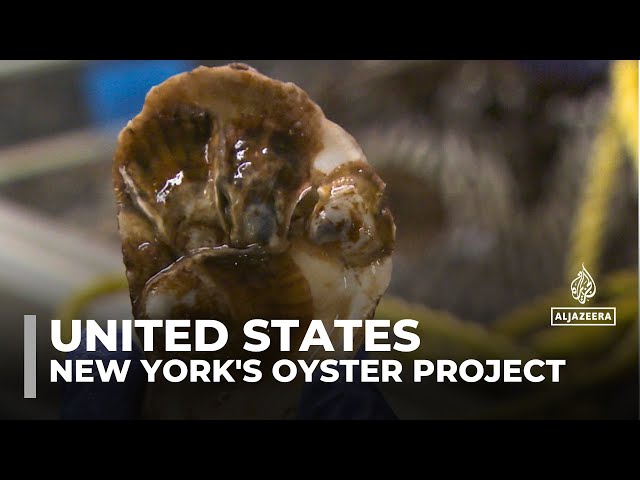Upcycling oyster shells into bio-alternative to concrete
Could the humble oyster help the construction industry reduce its carbon footprint by replacing the limestone in concrete with crushed shells? "Oyster[Crete] is a bio-alternative material to traditional concrete using discarded oyster shells that are collected from partner restaurants and turned into this composite bio-material," architect and interior designer Mooka Srisurayotin told Reuters. She was inspired to use the shells after coming across a busy oyster restaurant in London that throws thousands of shells into the bin every day. "They went through like 5000 shells a day," she said. "So we took the shells and saw the potential in the shell and it has the same chemical composition as limestone. So that's how Oyster[Crete] began," she said. The founder of her own interdisciplinary design studio, called Matter Forms, Srisurayotin set about developing a new sustainable building material replacing limestone with crushed oyster shells. "We would separate these shells into varying sizes, and then we would combine them into an Oyster[Crete] mix and all the composition within this material is all natural and the key ingredient is 80% oyster shells. We also use sand and clay, but it's very small quantity," she said. Srisurayotin describes her early products as small interior design objects but says she wants to eventually scale up production to create practical, large scale Oyster[Crete] building materials. Her first project could be the designer clothes shop, UJNG, where Matter Forms exhibited during the London Design Festival, which is considering an Oyster[Crete] facade. "These are sort of our beginning point but the main goal, we want to test it in a larger scale application like for architectural wall cladding, interior design," she said. At 'The Whistling Oyster' fishmonger and oyster bar in west London, fishmonger Will Boden said they get through thousands of oyster shells a month, all of which currently go straight in the trash. He added his support to upcycling of the shells. "It's a great idea. Anything's better than going into a bin, so yeah, great idea," Boden said. Cement, concrete’s crucial binding agent, is responsible for at least 6 percent of global CO2 emissions and is considered by many a "hard to abate" sector, generating huge volumes of carbon dioxide not only from the coal used to heat kilns, but also during the conversion of limestone into clinker, a key part of the production process. An infrastructure boom in developing countries could drive that figure as high as 17% by 2050, according to a U.S.-based think tank the Rhodium Group. - Report from Reuters




















